Scientists analyzed archival data from the Hubble Space Telescope and found evidence of water vapor in the atmosphere of Jupiter’s moon Ganymede. The water vapor is present due to thermal escape from the icy surface of the moon. Plus, a “fizzled” gamma-ray burst and all the exoplanets!
Podcast
Transcript
Hello and welcome to the Daily Space. I am your host Dr. Pamela Gay.
And I am your host Beth Johnson.
And we are here to put science in your brain.
One of the things that deeply bothered me for a lot of my childhood was “how do ancient cities get buried?” It kind of makes sense in the desert, where sandstorms can turn a house into a dune, but the random discovery of relics deep within Earth was mysterious. How do they get down there? Well, as a homeowner, I’ve come to appreciate that there is a constant build-up of pollen, dust, leaves, and other debris that would very much like to bury my yard and that tries to do so year after year.
I have made it a personal mission to defeat the detritus, but your average forest floor doesn’t have someone protecting abandoned cottages from slowly getting lost to time, leaves, and soil. Given the fullness of time, the year-on-year build-up of materials goes on to form the layered strata revealed on cliff faces and highway cutouts. These are the layered stones searched for fossils and the trace elements of cataclysmic periods of volcanism or asteroid impacts.
The deepest layers of Earth’s past get lifted into view through plate tectonics. When two parts of the Earth’s crust collide, the plates lift up to form mountains, and we see those past layers. In different places, different pieces of the past are revealed, but sometimes, parts are missing. Flooding, landslides, and other major events can wipe away chunks of history, leaving an incomplete record, and for one epoch of the past – from about 94 million years ago to 86 million years ago – no complete record had previously been found. This epoch corresponds to the late Cretaceous period and the end of the reign of dinosaurs. The world is large, however, and the mountains are many, and scientists recently recognized that the cut-away layers revealed in a German limestone quarry are the missing perfect record.
Located in Hasselberg, this quarry has a 40-meter section of exposed rock that – without any layers missing – captures the Earth’s history. According to lead researcher Ireneusz Walaszczyk: The sequence … prevails over other candidates, for example from the USA, India, Madagascar, New Zealand and Poland, because we have a perfect rock boundary sequence here over 40 meters, with a well-defined record of events which took place in this interval of geological time.
Co-lead Silke Voigt goes on to say: This is important in order to be able to make an exact chronological classification even in the case of incomplete successions and ultimately to see, for example, what the climate was like at a certain time in the past in different places in the world.
This work appears in the Episodes Journal of International Geoscience.
Scientists of all types spend a lot of their careers figuring out how to calibrate the when, where, and how of everything we see. In astronomy, we don’t have rocks to dig through, but we do have stars that build up myriad galaxies, and in their latter days, many of these stars will shine in particular ways that allow us to use them as calibration tools.
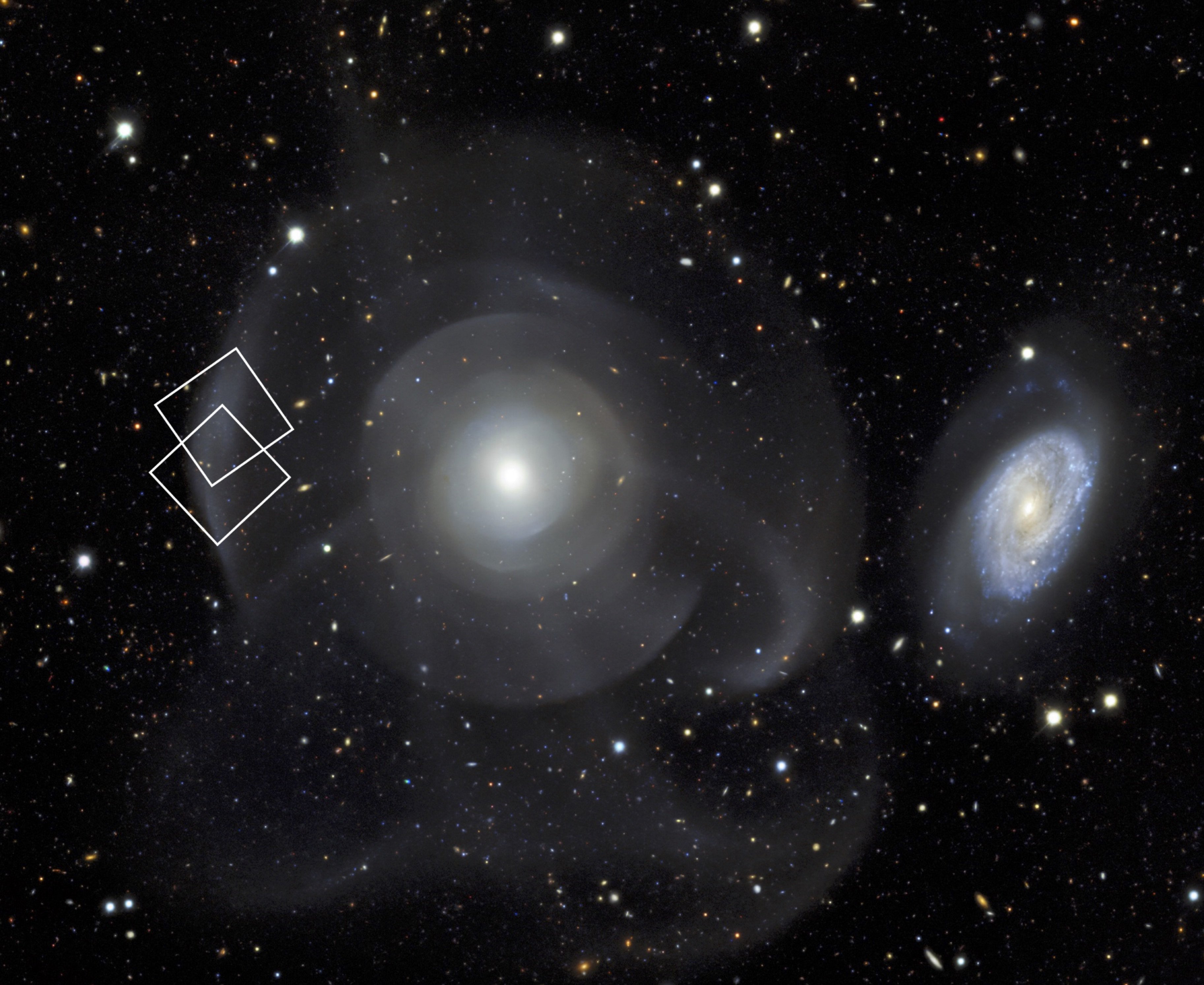
You may be familiar with supernovae being used as distance indicators. When two white dwarf stars of the same mass explode, they give off the same amount of light, and we can determine which is closer and which is farther by how bright they appear. While explosions are always going to catch a person’s attention, other stars take a more subtle approach. Stars like our Sun form what are called planetary nebulae when they die.
In its final millennia, the Sun will exhale its outer layers, and the core that will be left behind will illuminate that expanding shell (or shells) of material. The light that the core (a white dwarf star) gives off is pretty well known, and as the nebula expands over time, it will fade in a way that is directly proportional to its size. If a planetary nebula can be observed, its distance can be determined by measuring how big it appears and how bright it appears. Since only one distance value will fit both the size and distance, this is a useful technique for any galaxy close enough to allow us to use telescopes to see its planetary nebulae as more than just a point on the sky.
In the early 2000s, folks started studying planetary nebulae in the Andromeda galaxy and now, thanks to the amazing resolution of the MUSE instrument on the Very Large Telescope, astronomers have been able to make out nebulae in the galaxy NGC 474, which is 110 million light-years away, or 55 times further away than Andromeda. Remarkably, this distorted galaxy could easily be mistaken for a planetary nebula if glanced at in an image set.
Planetary nebulae exist in every large galaxy in our modern universe, including ours. This means we can measure them locally and use them to calibrate more… I was going to say globally, but in this case, the word is universally.

Speaking of distorted galaxies, a new image from the Hubble Space Telescope was released last week that provides scientists with another spectacular example of gravitational lensing. NASA explains: Gravitational lensing occurs when light from a distant galaxy is subtly distorted by the gravitational pull of an intervening astronomical object. In this case, the relatively nearby galaxy cluster MACSJ0138.0-2155 has lensed a significantly more distant inactive galaxy – a slumbering giant known as MRG-M0138 which has run out of the gas required to form new stars and is located 10 billion light-years away.
In the image, you can see how the light arcs around the center, where it is being bent by the galaxy cluster. For fun, see if you can find several different objects that are duplicated by the lensing as well. It might be difficult to find more than a few obvious examples since so many of the galaxies are unresolved blobs, but it’s an interesting exercise. We’ll have a link to the full image on our website DailySpace.org so that you can play along.
Sometimes, science is about pretty images. And sometimes, it’s really not. When it comes to examining Hubble Space Telescope images of objects within our solar system, they leave a bit to be desired, especially when it comes to smaller objects, like moons. But Hubble isn’t just about pretty pictures, either.
Onboard Hubble are several spectrographs – instruments that split light into individual wavelengths. One such instrument is the Space Telescope Imaging Spectrograph, which works in wavelengths ranging from near-infrared all the way to ultraviolet. Back in 1998, this instrument took the first ultraviolet pictures of Jupiter’s largest moon Ganymede, and the resulting images revealed patterns in the atmosphere. Those patterns turned out to be auroral bands and provided scientists with evidence that Ganymede has a permanent magnetic field.
Then scientists compared the images of Ganymede’s aurorae with aurorae observed here on Earth, and while they were similar, there were also differences. Per the press release: The similarities between the two ultraviolet observations were explained by the presence of molecular oxygen, O2. The differences were explained at the time by the presence of atomic oxygen, O, which produces a signal that affects one UV color more than the other.”
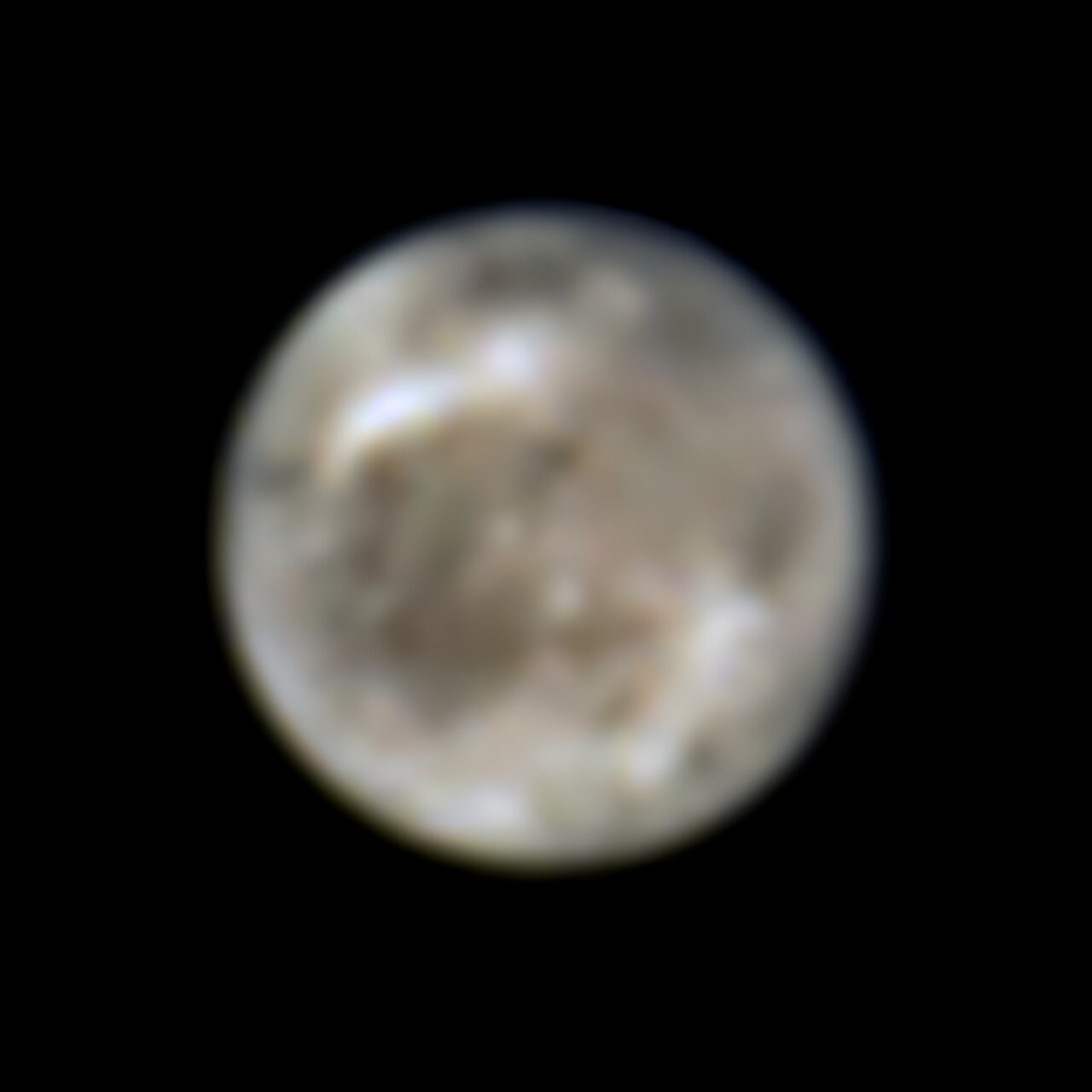
Then along came NASA’s Juno mission in 2018, and many teams participated in a variety of Jupiter-based research to support the Juno mission. One team, led by Lorenz Roth, used Hubble’s Cosmic Origins Spectrograph to capture new images in an attempt to measure just how much atomic oxygen is in Ganymede’s atmosphere. And here’s where the headline would read, “The answer might surprise you!” Because it definitely surprised the researchers who discovered that there wasn’t really any atomic oxygen in the atmosphere. The original analysis was incorrect, and that meant it was time for science to do that wonderful thing where it improves with new information.
Roth and his team decided to examine the distribution of the aurorae between the newer images and the older ones. They discovered that because the surface temperature of Ganymede varies wildly throughout the day, around noon, the temps may be warm enough near the equator for the small amounts of water ice to sublimate into water vapor. And the differences between the two sets of images provided the correlation between the aurorae and where water vapor would be expected. Roth explained: Initially only the O2 had been observed. This is produced when charged particles erode the ice surface. The water vapor that we have now measured originates from ice sublimation caused by the thermal escape of H2O vapor from warm icy regions.
The results of Roth and his team’s research have been published in Nature Astronomy, and they may even prove useful to the upcoming JUICE mission from the European Space Agency. The instrument teams now have more information about where and what they might want to observe and time to make those observations plans.
Ganymede is an icy moon. It’s the ninth-largest object in our solar system. It possibly has more water than all of the oceans here on Earth, although those oceans are subsurface. Very subsurface. 160 kilometers subsurface. But all that liquid water means Ganymede’s oceans could be habitable, just like Europa’s might be. And we’re definitely rooting for Ganymede as a place for potential life. So between Juno, JUICE, and Europa Clipper, we’re pretty excited for what our future understanding of the Jovian system holds, and we’ll keep you up to date on all the Jupiter missions here on Daily Space.
Our universe is filled with things that go flicker, flare, and boom in the night. One of the most amazing events we catch are gamma-ray bursts. We didn’t know anything in the universe produced these high-energy light waves until they were accidentally discovered in the 1960s when politicians launched gamma-ray detecting spacecraft to monitor the planet for nuclear explosions.
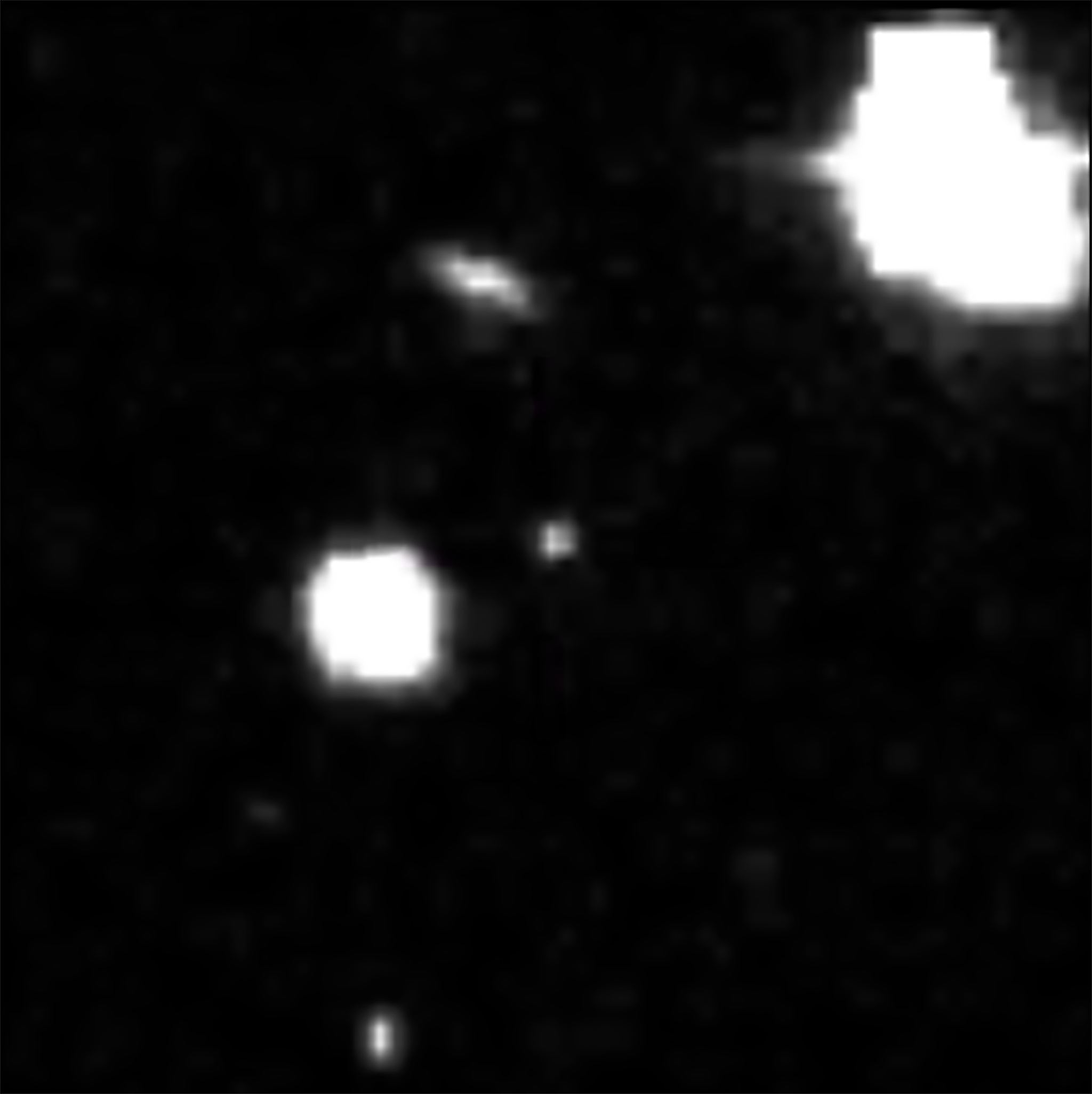
Today, we know they come in at least three different forms: two varieties of short bursts and longer bursts we’re still working out the details on. Recently, back in 2020, a long gamma-ray burst attempted to masquerade as a short gamma-ray burst. For just 0.65 seconds, the Fermi Gamma-Ray Space Telescope detected something. The Zwicky Transient Facility went on to detect a supernova explosion in the same part of the sky, and it’s now thought that this was a classic long-duration gamma-ray burst that, for some reason, had an abbreviated duration.
Supernovae on their own don’t look like much because of their extreme distance, but if we could zoom in we’d see something pretty amazing.
It is believed that when some massive stars end their lives as supernovae, something happens that causes powerful jets to form, and those jets funnel gamma rays and other radiation into a narrow cone. When one of those cones happens to be directed at us, we get to see a long gamma-ray burst. These are generally powered for a noticeable period of time, up to hundreds of seconds in duration, and their duration is related to how long it takes whatever physics is driving them to be played out.
That is physics that should be something that can’t be completed in just 0.65 seconds, but the universe decided it likes variety.
The researchers behind this paper believe that the conditions in this event were at the border of what is necessary to form a gamma-ray burst, and what we saw was the system teetering out of the zone that would allow a normal, long-duration burst. This makes it clear that while all long-duration gamma-ray bursts are tied to supernovae, not all supernovae can support or sustain a gamma-ray burst. At a certain level, we knew that from statistics: there are too few gamma-ray bursts for their scarcity to be explained just by how often we are or aren’t in the cone of their jets. Now we have seen that transition case, where something tries really hard to be a gamma-ray burst and doesn’t quite make it.
You do you, Lil Gamma-Ray Burst. We understand that sometimes we don’t all get to scream into the void of the universe for as long as we’d like, and we respect your efforts.
Exoplanet Week
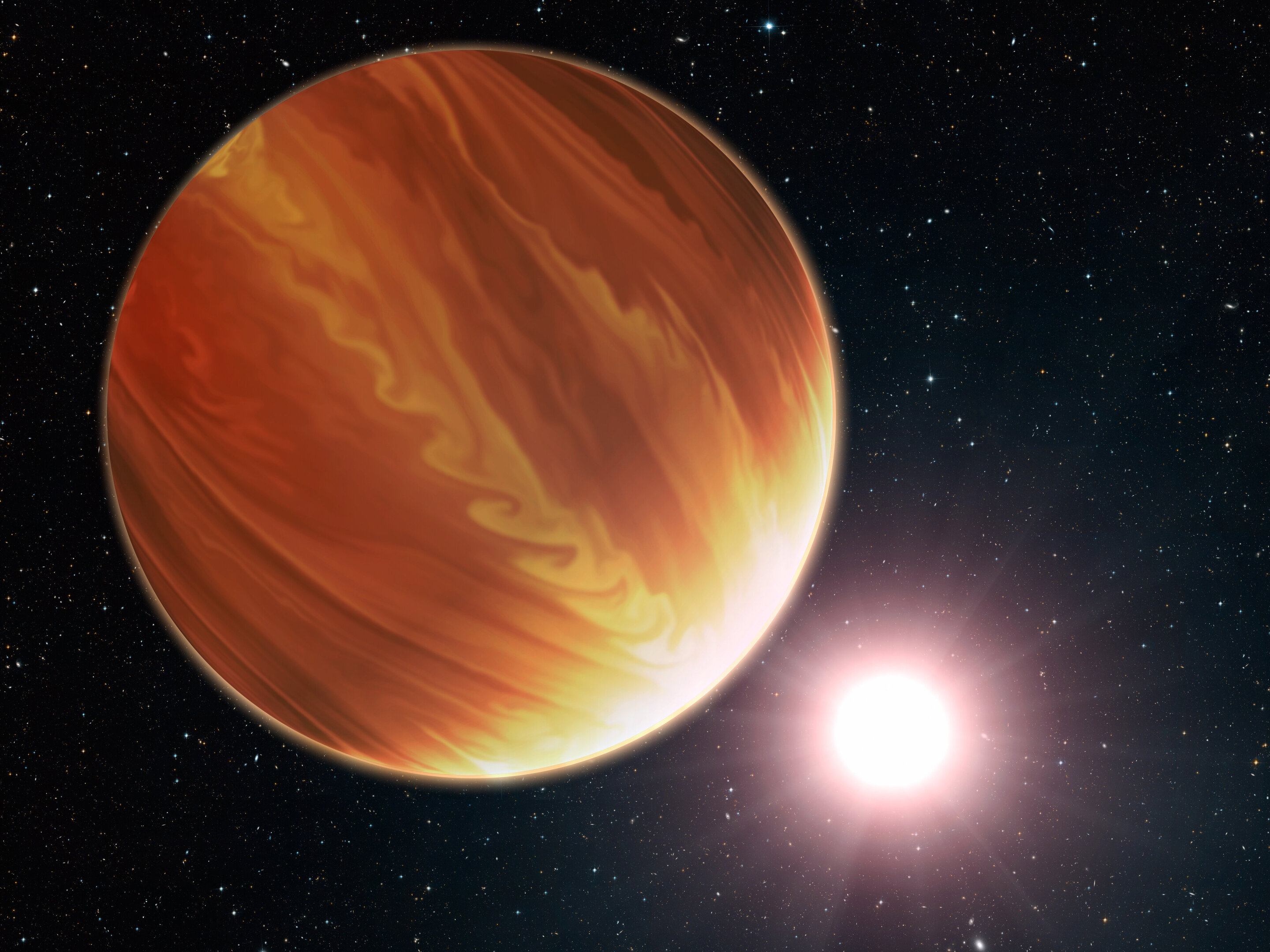
When I first came back to space science, I attended a meetup at NASA Ames Research Center to learn about the Kepler space telescope and its mission. Finding exoplanets was going to be a big deal in the upcoming years, and I was excited to be a small part of it. Now we’re at over 4000 discovered exoplanets and counting, to the point where exoplanet discovery announcements have to come with some sort of bonus reason as to why they’re important or interesting. Because “woo, look, another exoplanet” just doesn’t make headlines anymore.
So what’s next for the worlds of exoplanet science? One increasingly studied aspect is the atmospheres of those exoplanets. We’re getting to the point where we have instruments sensitive enough to gather data about atmospheric composition. Last week, we reported on finding various carbon isotopes in the atmosphere of a distant world. This isn’t a new science, though. In 2001, Hubble’s spectrographs found less sodium in a planet’s atmosphere than expected. Which led to researchers contemplating clouds as a reason they couldn’t see the sodium.
Huge banks of dark, hot clouds on a planet five times hotter than Earth, though, would make for some interesting weather. It’s unlikely that the droplets making up those clouds would be made of water. So now we have really neat hypotheses about clouds made of liquid sand, iron, rubies, diamonds. Clouds are difficult to study here on Earth, though. They’re simultaneously made of the microscopic and the huge — water droplets coming together to form a wide range of shapes and structures, covering more than two-thirds of the surface of Earth.
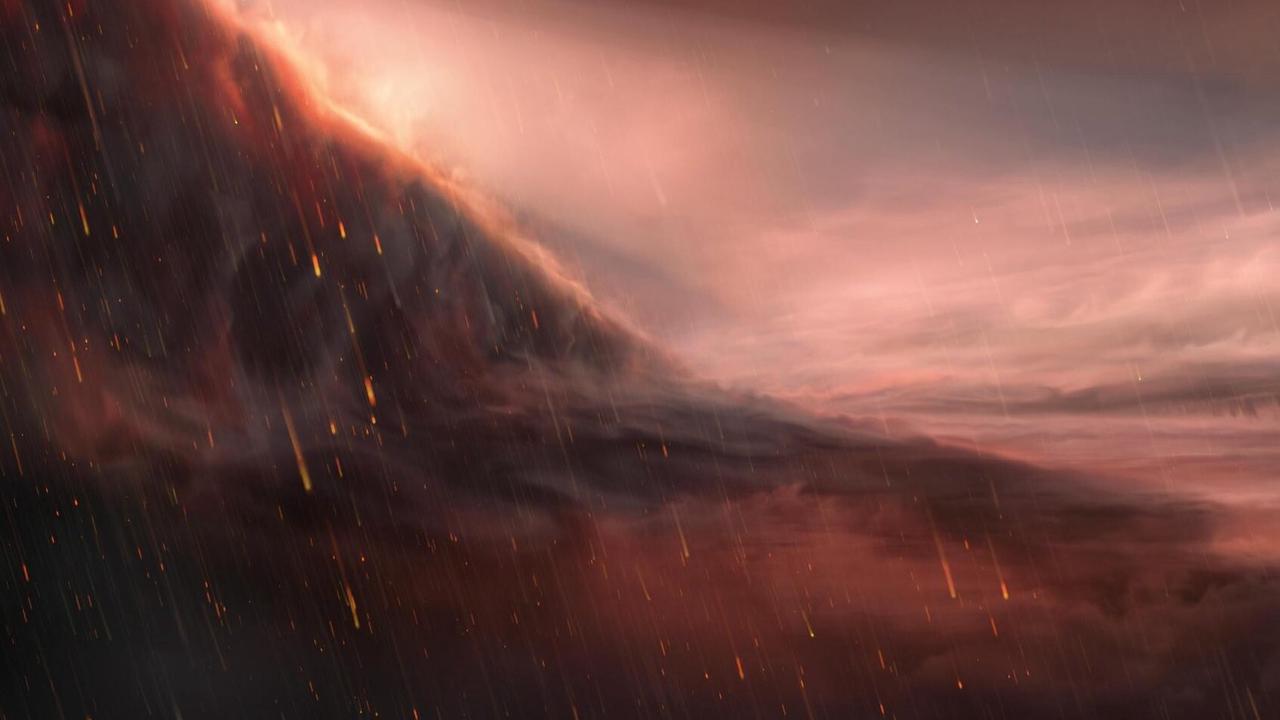
And our own solar system has its fair share of weird weather. Venus has sulfuric acid in its clouds. Jupiter has ammonia mushballs. Titan has methane and ethane rain. How do we even begin to understand the clouds on worlds so far away we cannot directly image their surfaces? We go back to the transit of the planet in front of its star, and we use spectrographs to catch the chemical signatures of molecules in the planet’s atmosphere. We take into consideration the temperature of the planet. And we add it all together to get… even weirder forms of rain like the iron rains of WASP-76b.
WASP-76b is a strange planet, to begin with. It’s a gas giant nearly two times the radius of Jupiter. It orbits its star in less than two days because it’s only 0.033AU from that star. It’s tidally locked. The daytime temperature can reach 2,400 Kelvin, but the nightside doesn’t get as hot, and the iron atoms are only detected on the dayside. This difference appears to be evidence for iron vapor to move around the planet via the winds (again, think Jupiter-type storm patterns), condense, and fall as rain on the nightside, where they no longer appear in the atmosphere.
It’s not perfect evidence. It’s not images of iron rain falling. It’s the best we can do at the moment, though, and we’re still waiting for the telescope that shall not be named to do the thing and get launched so we can finally use its infrared capabilities to look at all these exoplanets. Then, finally, we can directly measure what all these weird and interesting clouds are made of.
Until then, this has been the Daily Space.
Learn More
Perfectly Layered Strata Tell Late Cretaceous History
- Goethe University press release
- “Reassessment of the Salzgitter-Salder section as a potential stratotype for the Turonian–Coniacian boundary: stable carbon isotopes and cyclostratigraphy constrained by calcareous nannofossils and palynology,” S Voigt et al., 2021 April 9, Newsletters on Stratigraphy
- “The Global Boundary Stratotype Section and Point (GSSP) for the base of the Hauterivian Stage (Lower Cretaceous), La Charce, southeast France,” Jörg Mutterlos et al., 2021 June 1, Episodes
Planetary Nebula Imaged in Distant Galaxy
- AIP press release
- “Toward Precision Cosmology with Improved PNLF Distances Using VLT-MUSEI. Methodology and Tests,” Martin M. Roth et al., 2021 July 22, The Astrophysical Journal
Hubble Releases New Gravitational Lensing Image
- NASA press release
Hubble Finds Water Vapor in Ganymede’s Atmosphere
- ESA press release
- Hubblesite press release
- NASA press release
- “A sublimated water atmosphere on Ganymede detected from Hubble Space Telescope observations,” Lorenz Roth et al., 2021 July 26, Nature Astronomy
Gamma-Ray Burst Snuffs Out
- Gemini Observatory press release
- NASA press release
- NOIRLab press release
- “Discovery and confirmation of the shortest gamma ray burst from a collapsar,” Tomas Ahumada et al., to be published in Nature Astronomy (preprint on arxiv.org)
Understanding Exoplanet Atmospheres is Next Big Science
Credits
Written by Pamela Gay and Beth Johnson
Hosted by Pamela Gay and Beth Johnson
Audio and Video Editing by Ally Pelphrey
Content Editing by Beth Johnson
Intro and Outro music by Kevin MacLeod, https://incompetech.com/music/


 We record most shows live, on Twitch. Follow us today to get alerts when we go live.
We record most shows live, on Twitch. Follow us today to get alerts when we go live.